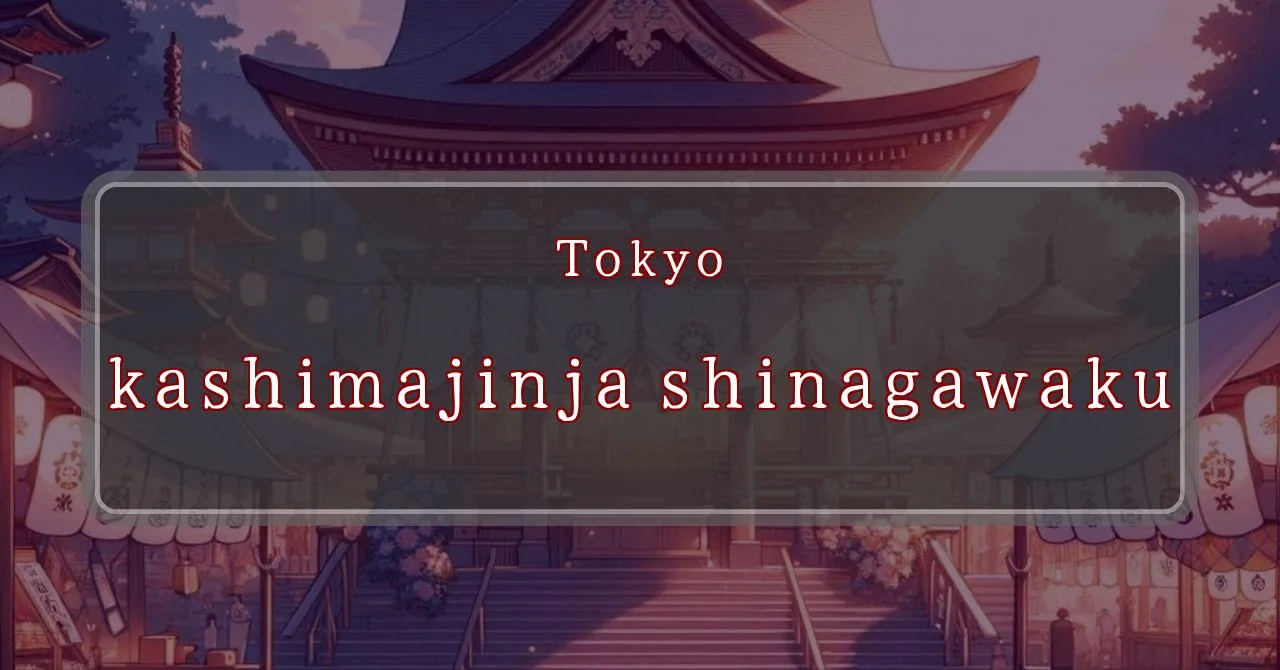Enchanting melodies and vibrant hues at Ooi’s grand festival
Basic Information
Ooi’s grand festival, held at Kashima Shrine, is a spectacle of vibrant hues and enchanting melodies. This annual event, steeped in tradition, draws throngs of visitors to witness its captivating displays.
- Address: 6-18-36 Oi, Shinagawa-ku, Tokyo
- Phone Number: 03-3775-0753
- Access: 11-minute walk from JR Omori Station
- Festival Days: Third Saturday and Sunday of October
Main Events and Attractions of the Festival
Ooi’s grand festival, held at Kashima Shrine, is a vibrant spectacle that captivates visitors with its enchanting melodies and colorful displays. The festival features a variety of events and attractions that showcase Japanese culture and traditions.
Ooi囃子 (Ooi Bayashi)
One of the highlights of the festival is the Ooi囃子 (Ooi Bayashi), a traditional Japanese musical performance. This lively music, featuring flutes, drums, and gongs, is performed by local musicians and dancers, creating a festive atmosphere that resonates through the streets.
- Overview: Traditional Japanese musical performance
- Features: Lively music played with flutes, drums, and gongs
Mikoshi Procession
Another central event of the festival is the Mikoshi Procession, where a portable shrine, or mikoshi, is carried through the streets by local residents. The mikoshi is believed to house the deity of the shrine, and the procession is a way to pay respects and seek blessings. Visitors can witness this solemn and colorful parade as it makes its way through the festival grounds.
- Overview: Procession of a portable shrine
- Features: Carried by local residents, believed to house the deity
Food Stalls
No Japanese festival is complete without food stalls, and Ooi’s festival is no exception. Visitors can indulge in a variety of delicious Japanese street food, from traditional favorites like takoyaki and yakisoba to local specialties. These food stalls offer a culinary journey that tantalizes the taste buds and adds to the festive ambiance.
- Overview: Variety of Japanese street food
- Features: Traditional favorites and local specialties
Blessings and Deities
Kashima Shrine is dedicated to Take-mikazuchi-no-kami, a revered deity in Japanese mythology. Take-mikazuchi-no-kami is known as the god of thunder and the sword, and is revered as a guardian deity by samurai and warriors. The shrine is believed to bestow blessings of traffic safety, travel safety, and good luck in business.
- Deity: Take-mikazuchi-no-kami
- Blessings: Traffic safety, travel safety, good luck in business
Origin and History
The origins of Kashima Shrine can be traced back to the Heian period (794-1185). In 969, a monk named Son-ei Hoin is said to have enshrined a portion of the deity Take-mikazuchi-no-kami from Kashima Shrine in Ibaraki Prefecture. This marked the establishment of Kashima Shrine in Ooi, Shinagawa.
- Establishment: 969
- Founder: Son-ei Hoin
- Original Deity: Take-mikazuchi-no-kami from Kashima Shrine, Ibaraki
Tips and Notes for Visitors
To fully enjoy your visit to Kashima Shrine during the festival, here are some tips and notes:
- Comfortable Footwear: Wear comfortable shoes as you will be walking around the festival grounds.
- Weather Preparedness: Check the weather forecast and dress accordingly. Bring an umbrella or raincoat in case of rain.
- Hydration: Stay hydrated by bringing a water bottle or purchasing drinks from the festival stalls.
- Respectful Behavior: Remember to be respectful of the shrine and its customs. Follow any instructions or guidelines provided by the shrine staff.
- Photography: Photography is generally allowed at the festival, but be mindful of others and avoid taking pictures that may cause discomfort.
Parking Information
There is limited parking available at Kashima Shrine. Visitors are encouraged to use public transportation or consider alternative parking options in the surrounding area.
- Limited On-Site Parking: A small number of parking spaces are available at the shrine, but these are limited and may fill up quickly.
- Public Transportation: Kashima Shrine is easily accessible by public transportation. The nearest station is Omori Station, which is an 11-minute walk from the shrine.
- Nearby Parking Facilities: There are several parking facilities located near Kashima Shrine. Visitors can search for parking garages or lots in the surrounding area.
Popular Stalls and Food Carts in Recent Years
| Type of Stall | Description |
|---|---|
| Takoyaki | A staple at Japanese festivals. Characterized by a crispy outside and a creamy inside. |
| Jaga Butter | A simple yet popular snack of hot potatoes lavishly topped with melted butter. |
| Baby Castella | Small castella cakes, sweet and fluffy treats enjoyed by children and adults alike. |
| Grilled Ayu with Salt | Fresh ayu fish grilled whole with salt, a savory taste of Japanese summer. |
| Shaapin | A unique gourmet item influenced by foreign cuisine, with a chewy skin wrapping the filling. |
| Okonomiyaki | A Japanese grilled dish where you often choose your own ingredients for a personalized flavor. |
| Cotton Candy | A fluffy, sweet snack that’s extremely popular with children. |
| Chocolate Banana | A banana coated in chocolate, a fun and visually appealing dessert. |
| Kushiyaki | Various types of ingredients skewered and grilled, an easy-to-enjoy snack. |
| Yakisoba | Fried noodles mixed with a special sauce, a fast food favorite in Japan. |



